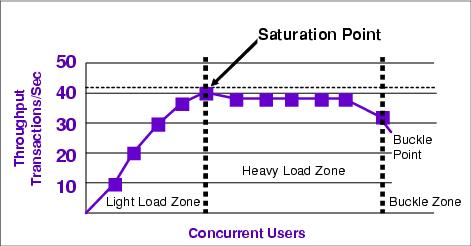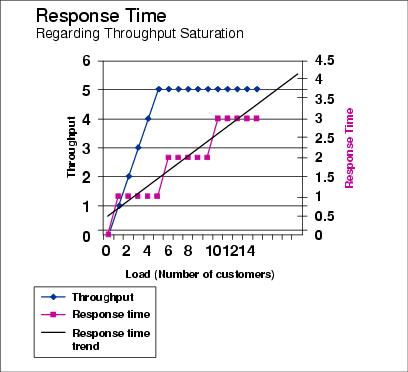1.4.5 Throughput saturation
When a Web site reaches maximum throughput, additional load does not yield additional throughput. In other words, the maximum throughput is a saturation point and can often be characterized as reaching a bottleneck, such as 100% CPU utilization. Figure | -8 shows the throughput saturation graph of transactions versus users.

Figure 1-8 Throughput saturation curve
Response time is closely tied to maximum throughput. Once we reach maximum throughput:

| New arrivals begin to queue. |

| "Time in queue" must be added to compute the overall response time. |
A server or system may support more load beyond maximum throughput. Consider the example of a hamburger store. As shown in Figure | -9, the hamburger customers are probably being served faster than they arrive, and only a short queue has built up as three customers arrive in a group. Queues only exist for brief bursts of activity, and the response time is stable.

Figure 1-9 Arrival time greater than cooking time, stable response time
If customers arrive slightly faster than the attendant can produce the hamburgers then a queue will rapidly build up, as illustrated in Figure | -10.

Figure 1-10 Arrival time less than cooking time: Response time increases as wait time increases
A server or system may support more load beyond maximum throughput by queuing requests.
Figure | -11 shows that as the number of customers arriving increases, but can be handled, the throughput increases linearly and the response time remains stable. But when the maximum throughput is reached the response time climbs rapidly.

Figure 1-11 Throughput versus response time